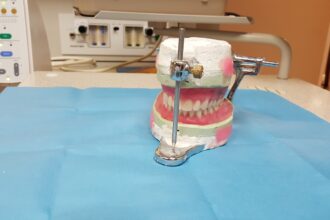The pathophysiology of cancer involves uncontrolled cellular proliferation–that we know–but the process doesn’t go on forever. After reaching a certain size, tumors do stop growing. This phenomenon is probably driven by growth-inhibiting chemicals that are released by tumor cells themselves.
Scientists are now trying to harness this phenomenon using a decidedly counterintuitive strategy: introducing cancer cells into the bodies of mammals–including humans–that are already afflicted with cancer. The strategy amounts to fighting cancer with cancer. Remarkably, early results from studies of the technique have been positive.
The technique was developed by Barry Smith and colleagues at the Rogosin Institute, an independent treatment and research center in New York. Smith’s group creates pea-sized beads of mouse kidney cancer cells that are encapsulated in a growth-restricting shell.
Initially, the beads contain about 150,000 cancer cells. During an incubation period however, all but 1% of those cells die, according to Smith. The remaining ones secrete proteins or peptides that inhibit tumor growth. Some of the chemicals promote cell death directly; others impair a cell’s ability to stimulate new blood vessel formation which is needed for cellular survival.
“They reach a stable state in which there is cell division and cell death,” Smith said in an interview. “They are producing inhibitory factors that regulate their growth.”
Once the encapsulated concoction is “mature” in this way, Smith’s group implants the beads into the abdominal cavities of cancer patients.
In a pair of studies released last week in Cancer Research, Smith’s group reported that their treatment reduced tumor size in laboratory mice, dogs and cats. Many cancer-stricken animals survived longer than expected.
Smith’s team observed that mice who received the beads had tumors that were 30-60% smaller than untreated mice. In subsequent experiments with dogs and cats, the bead treatments were associated with survival rates that were longer than expected. A cohort of 11 dogs with prostate cancer experienced a median survival of 177 days, for example. They had been expected to survive less than 50 days. In some cases, the tumors disappeared almost completely. These studies did not feature a control group however, and it is far from clear that the findings will be reproduced in humans.
Smith’s group has indeed carried out an initial study in which 30 human patients received the beads. The study revealed the beads to be safe: there were no adverse effects in patients receiving the treatment. Now, a phase two trial is underway in patients with advanced cancers of the prostate, pancreas and colon.
The medical literature is filled with experimental cancer treatments that worked in animals, but flamed-out in human trials. Hopefully that won’t happen with Smith’s cancer beads.








